Wim Wenders talks about his films Perfect Days and Anselm
With Perfect Days, a meditation on the simple life of a toilet cleaner in Tokyo, veteran director Wim Wenders has delivered his best film in years.
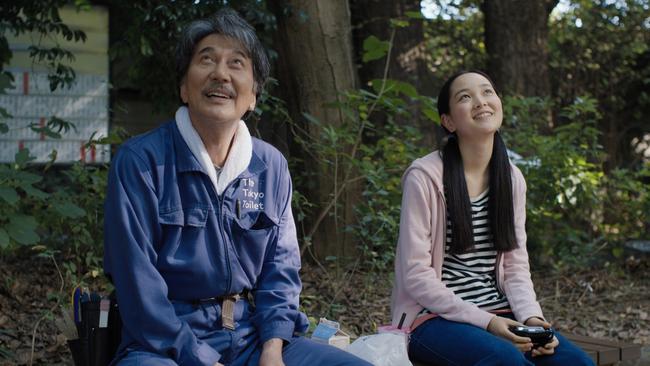
Last year, German filmmaker Wim Wenders was invited to Tokyo to do research for a prospective documentary or photographic exhibition about Japanese miniature palaces. Instead he ended up making a remarkable feature film, Perfect Days, about the working life of a public toilet cleaner in Tokyo.
For the delayed 2020 Olympic Games, the city had commissioned architects and creative teams to redesign public toilets at 17 locations across the city. The facilities were intended to symbolise Japan’s “hospitality culture”, and the architects came up with some surprising examples of urban design.
“The toilets and the way they are treated are clearly part of the common good in Japan,” says Wenders, who became fascinated by them.
“I realised I didn’t want to take photographs or make a documentary about these remarkable modern sanitary temples. I know too well that places are better preserved in fiction.
“If anybody had made a documentary in Berlin before the fall of the Wall, nobody would know it any more. But Wings of Desire is an outrageous fiction and it preserved the Berlin of that time better than any documentary could have possibly done.”
Wenders is speaking at this year’s Cannes film festival, where he delivered his best films in years. Perfect Days won the best actor prize for Japanese veteran Koji Yakusho, and Wenders screened his astonishing 3D documentary Anselm, about his friend, German artist Anselm Kiefer.
Wenders also appeared in a third film, Lubna Playoust’s documentary Room 999, a kind of follow-up to his 1982 film Room 666, where he interviewed filmmaking luminaries of the time. The Melbourne International Film Festival, opening on August 3, is screening all three films.
Wenders, 77, is happy that his films are screening prominently in Australia, a country he loves and where he partly shot his passion project, 1991’s Until the End of the World, co-written by Peter Carey.
“I hear your accent and I’m instantly homesick,” he says. “I haven’t been to Australia for a decade and I badly miss it. I love the outback so much! I told my wife about staying out there for three months and always sleeping on the ground, on my swag. And how when I returned to Sydney I always schlepped the mattresses on to the balcony because I couldn’t sleep under a roof any more.
“I haven’t had the chance to do that again and I told her that we have to do it together, in Australia of course. We’d have to see if any of my Aboriginal guides are still around, but maybe they’re too old, so their children can take us. Or maybe Charlie McMahon is still up for it.”
A leading figure in the New German Cinema, Wenders enjoyed immense success with films including Paris, Texas, which won the 1984 Cannes Palme d’Or, and the Berlin-set Wings of Desire, which won the 1987 directing prize at Cannes.
He has long been a fan of all things Japanese, from the films of Yasujiro Ozu – he retraced Ozu’s footsteps in his 1985 documentary Tokyo-Ga – to the designs of his friend Yohji Yamamoto, whose clothing he wears and for whom he has modelled on the catwalk. “It’s all I ever wear,” he says.
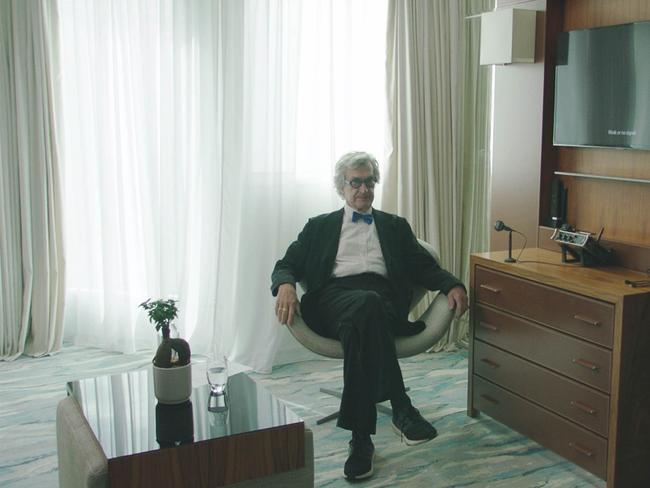
His 1989 documentary Notebook on Cities and Clothes was about the relationship between fashion and cinema and focused on the designer.
He jumped at the chance to visit Tokyo again. He co-wrote Perfect Days over two weeks with Japanese writer Takuma Takasaki in Berlin and filmed it across 16 days in Tokyo. It’s the fastest he has ever made a film.
Takasaki knew Yakusho and enlisted the actor to star as the toilet cleaner, Hirayama. Wenders wanted the character to symbolise what he likes so much about Japan. He has him living in the working-class area of Oshiage, “one of the old neighbourhoods left with narrow little streets and two-storey wooden houses”.
A delicate character study, Perfect Days depicts Hirayama as a humble, old-fashioned man who lives a structured existence: eating his lunch on the same bench in a temple garden every day, venturing after work to a local bathhouse, eating dinner each night at the same market food counter, then reading Patricia Highsmith or William Faulkner at home.
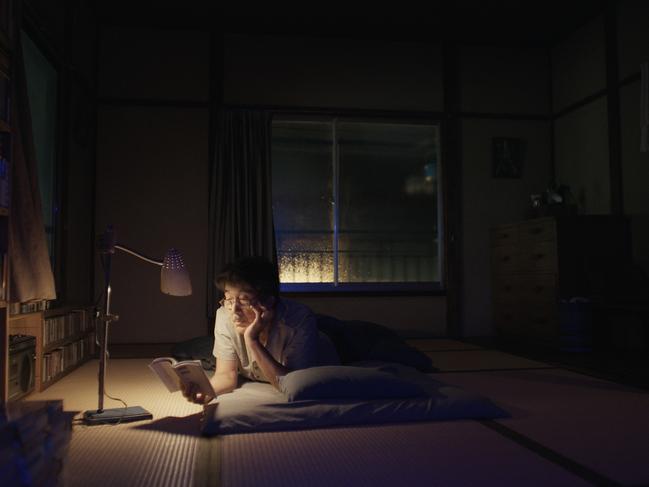
During work hours in his Tokyo Toilets van he listens to 1960s and ’70s rock classics by artists including Patti Smith, the Animals and Lou Reed (hence the film’s title).
We don’t know about his past and he doesn’t say much, although hints are given regarding his affluent upbringing and friction in his family. When his estranged sister comes to pick up her daughter – who has made a surprise visit to her uncle and disrupted his routine – it highlights how his carefully ordered life is a defence against a past he doesn’t want back. On the contrary, his present modest life makes him happy.
“What makes a perfect day?” Wenders ponders. “I like the little time-outs that I really learned to appreciate through the film.
“I like the idea that less can be so much more. You learn that from Hirayama, that it’s good to be happy with what you have. I love it that Hirayama doesn’t even have a TV in his room. He has his books and they are big, big doors into the world. Reading is such great filmmaking in your mind. And then there is his music! Hirayama has everything he needs.”
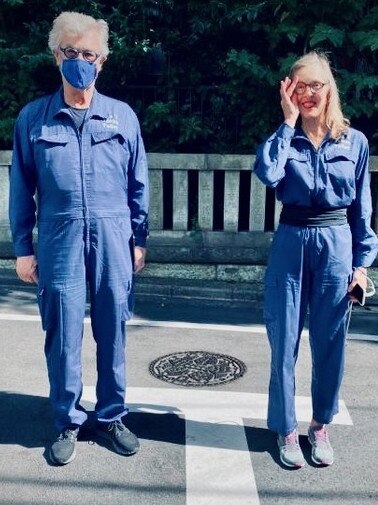
When Wenders travelled to Tokyo he had been in the throes of editing Anselm, his 93-minute, 3D documentary about the artist that was the result of seven shoots.
It is another example of the director’s gift for documentary, following three Oscar nominations: for Pina, about German choreographer Pina Bausch, also filmed in 3D, a format that “allows a more profound physical and mental immersion and creates a language that is capable of poetry”; The Salt of the Earth about Brazilian photographer Sebastiao Salgado; and The Buena Vista Social Club, which rejuvenated the careers of elderly, forgotten Cuban musicians.
“For my documentary films I always try to find a story,” Wenders says. “The Buena Vista Social Club was one big fairytale anyway. When we met these guys, they were shining shoes and were unknown to anybody, even in Havana. At the end of the shoot, people were standing on their chairs in Carnegie Hall and were treating them like they were the Beatles.”
Wenders has known Kiefer’s art since the 1980s and first met him in Berlin in 1991. He was editing his film Until the End of the World, and Kiefer – who had enjoyed enormous success in the US – had returned to prepare his first big show in Germany. They recognised each other while dining at a restaurant near Wenders’ home. “We started to talk and we had a cigar together,” Wenders recalls.
“Then for weeks we met every night and became good friends. At the end, he said, ‘Wim, did you know that I wanted to be a filmmaker?’ I said no. ‘But I know now that you wanted to be a painter. So what if we, the painter who wanted to make movies and the filmmaker who wanted to be painter, make a film together?’ I said I loved the idea.”
Two days later was the opening of Kiefer’s show. His work was focused on examining taboos around Germany’s Nazi past and reckoning with the Holocaust. Especially in Germany, he was often deemed controversial.
“The Germans seemed to hate it,” Wenders says of the exhibition. “I didn’t understand why because I thought it was fantastic stuff. I was offended myself, when I read these reviews. And Anselm was really hurt. I didn’t hear from him for a while. I travelled a lot and eventually he wrote to me saying he was about to move to France. There were probably also other reasons, but I understood his move. The prophet needed to leave his own country.”
The two men, both born in 1945, kept in contact as Wenders lived in the US for several years and Kiefer moved to Barjac in the south of France, where he acquired La Ribaute, an old silk factory he turned into a vast studio complex. In 2019, on Kiefer’s invitation, Wenders travelled to Barjac for the first time and was astounded by what his friend had created.
“We sat together again like in the old days, had a glass of wine and smoked a cigar. And then I said: ‘Anselm, I think it’s now or never,’ and he nodded and added: ‘For me, too, or I’m going to start forgetting things. So let’s do it now.’
“Anselm said: ‘That’s why I wanted you to come.’ ”
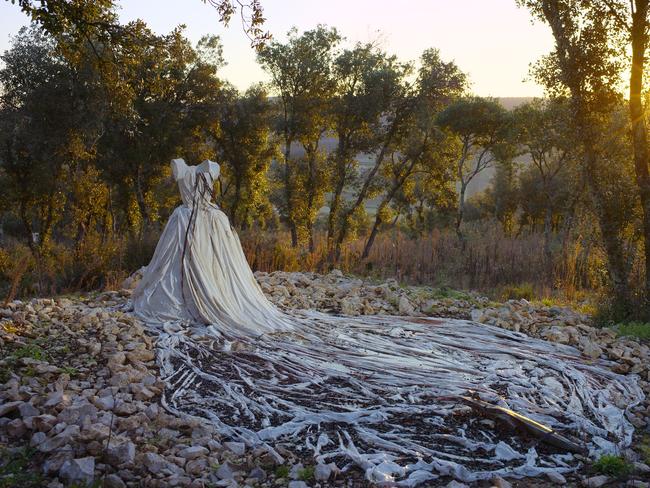
While the vast scale of Kiefer’s work is on full display in the film, Wenders also examines the artist’s past and why his art was contentious in Germany, which continues to grapple with its violent history. Kiefer did not want to read a synopsis or see an edit of the film.
“Anselm’s father was probably a Nazi or maybe just a sympathiser, I don’t know, but his uncle was an ardent Nazi,” Wenders says. “Anselm used his uniform for the photographs he did in the series he called Occupations. He told me that all the teachers he had growing up were Nazis. I remember most of my own teachers were Nazis. My maths teacher still had that moustache. In West Germany a lot of these people were still in all sorts of positions.”
How does he think that formed Kiefer’s personality?
“Anselm became a fighter because of it … He got into a lot of trouble for his photographs with a Hitler salute and some of his professors at the art school in Karlsruhe even refused to sign his diploma,” he says.
“(Joseph) Beuys helped Anselm a lot in the beginning and helped him to get his first exhibition. Anselm was very shy, but he was adamant in his public actions. One big action was burning all the public books of the little village he was living in. When he became a public figure, he first represented Germany at the 1980 Venice Biennale and that was an outrage. Some German reviewers said, ‘Why do you send a Nazi to Venice?’ ”
Wenders can relate in terms of the negative reception for some of his films. When asked to choose a favourite film, he says, it’s like having to choose a favourite child, even if he never became an actual parent. “I love my children who had a hard time very much and Until the End of the World was a child who had a very unhappy youth when he came into the world, was mistreated and abused, actually cut in half.”
That first release, which he calls the “Reader’s Digest version”, ran at 158 minutes. Twenty years later he regained the rights and released a director’s cut, at 287 minutes and in 4K.
“I’m still good friends with most of my Australian crew – the art director, the Australian producer, my first AD, the prop man, everybody, we’re still a club. We still write to each other and send photos,” he says.
Anselm, Perfect Days and Room 999 will screen at the Melbourne International Film Festival next month.

To join the conversation, please log in. Don't have an account? Register
Join the conversation, you are commenting as Logout